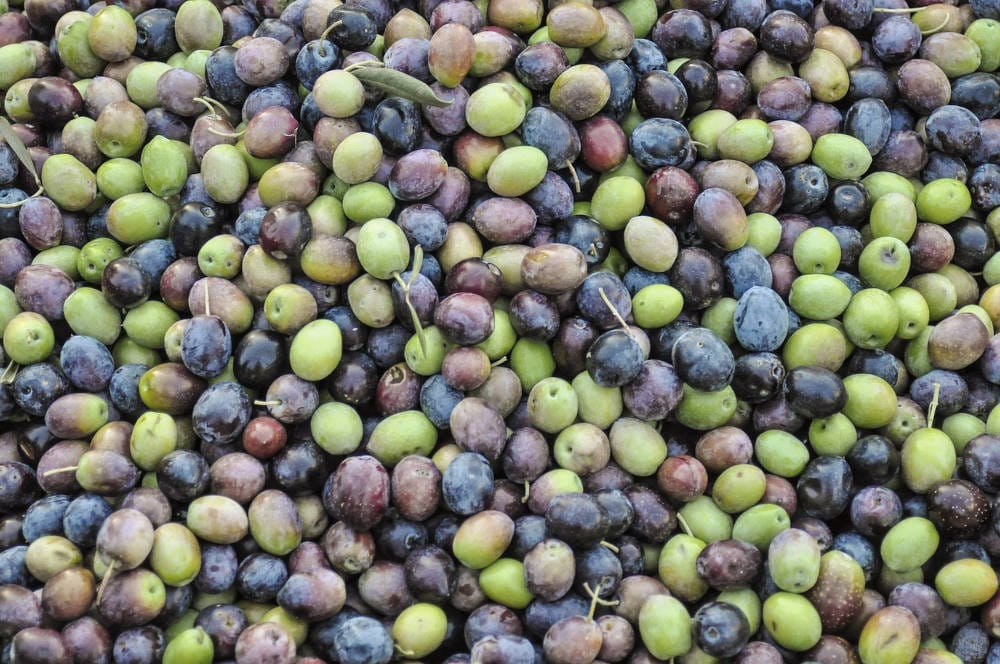What Cold means?
The processing of the product must occur without any type of heating or addition of hot water. Any form of heating that increases the product’s temperature disqualifies it as cold-pressed. For example, if the product initially has a temperature of 10°C and is raised to 15°C, it is no longer considered cold-pressed. However, if the temperature remains at 10°C or decreases (e.g., to 5°C), it can be categorized as cold pressing.
What Is Extraction?

Extraction refers to the separation of olive oil from the solid and liquid components using a vertical centrifuge operating at 1,300 revolutions per minute.
To achieve cold extraction, juice separation must be carried out at low speeds and without any addition of water or external heat.
Olive Fruit Processing
After defoliation and washing, the olive fruit is led to the crusher, where the critical processes begin.
- Olive Crushing:
- Hammer Mill: Crushers operating at high speeds (3,000+ revolutions) can cause emulsification, resulting in product degradation. It has been found that speeds up to 1,400 revolutions do minimal damage. Ideal crushing is achieved at speeds below 1,000 revolutions.
- Millstones: They tend to produce molds.
- Alternative Olive Crushing Methods: Less common but can yield better quality products.
- Malaxation of Olive Paste:
- Open Malaxers: The addition of hot or warm water is a common practice to soften and help extract oil, but this compromises product quality.
- Oxidation Example: If you crush a handful of green olives in a blender, spread the paste on a plate, and check after two minutes, you’ll notice that the top surface has turned brown. This is due to oxidation. Open malaxation for 30-60 minutes under heat exacerbates this effect.
- Modern Olive Mills: Use closed malaxers to reduce oxidation.
- Separation of Liquids from Solids:
- High-Speed Decanters: Operating at speeds of 3,000–4,000+ revolutions, with the addition of hot water, are detrimental. This combination washes away valuable polyphenols, which are water-soluble, causing significant degradation of olive oil.
- Extraction with Mats: After malaxation, the olive paste is spread on mats and then subjected to mechanical or hydraulic pressure to extract liquids. Although better than centrifugation, this method can also produce molds.
Olive Oil Cleaning:
- Centrifugal Separator: Operating at ultra-high speeds of 7,000+ revolutions per minute, it is often mandatory after decanters.
- Additional Separator: At speeds of 8,000 revolutions per minute, this process typically involves hot water to remove residual elements. Unfortunately, the combined effect of high revolutions and hot water further washes out any surviving polyphenols, degrading the product.
Why Don’t All Producers Use Cold Pressing?
Producing top-quality olive oil requires expertise and strict adherence to best practices, such as:
- Harvesting Timing: Picking not overly ripe olives ensures superior quality and lower acidity. Green olives yield high-quality “early harvest” oil, while riper olives produce more oil but with higher acidity.
- Gentle Harvesting: Picking by hand avoids damaging the fruit.
- Same-Day Processing: Olives should be processed within the same day to maintain freshness.
- Proper Cleaning: Removing leaves and branches and washing with clean, cold water is essential.
- Slow Speed Processing: Using crushers with speeds below 1,000 revolutions minimizes damage.
- Closed Malaxers: Prevent oxidation of the paste.
- No Heating: Ensures preservation of nutrients.
- Unfiltered Oil: Filtering removes valuable nutrients.
The result is a superior quality product that remains pure and unaltered by heating or chemicals. However, the high cost of this method deters most producers from adopting it, as it reduces oil yields.
The Pitfalls of Modern Olive Oil Production
To lower production costs, many producers use shortcuts such as:
- Grinding olives with leaves and branches.
- Mixing low-quality fallen olives with better ones.
- Storing olives improperly, leading to mold and bacteria growth.
- Using high-speed centrifugation and hot water, which washes out polyphenols and diminishes nutritional value.
- Filtering oils to make them appear visually appealing but nutritionally inferior.
These practices compromise the nutritional and antioxidant properties of olive oil, reducing its shelf life and health benefits.
The Nutritional Value of Cold-Pressed Extra Virgin Olive Oil
Cold-pressed extra virgin olive oils stand out for their aroma, color, and taste. They have very low acidity (always below 0.3%) and are rich in:
- Sterols: Especially β-sitosterol
- Fatty Acids: Primarily oleic acid (omega-9), linolenic acid (omega-3), and linoleic acid (omega-6)
- Antioxidants: Including tocopherols (vitamin E), vitamin C, carotenoids (β-carotene, xanthophyll), phenols, and polyphenols
The “Trap” of Cold-Pressed Extra Virgin Olive Oil Claims
In reality, many products labeled as “cold-pressed extra virgin olive oil” have little resemblance to the olive oil consumed by our ancestors.
These are often lower-quality products that have undergone treatments to reduce acidity to 1%, 2%, or even higher levels up to 8%, misleading consumers with deceptive labels.
A Final Note
If you want to taste an olive oil produced under the strictest conditions, ensuring real cold-press extraction and preserving all its benefits and taste, please visit our store. As you will see, we only sell one olive oil and not a wide variety. This is because we respect ourselves and our customers. This olive oil represents the best Greek olive oil you can taste and is offered at the best possible price.
